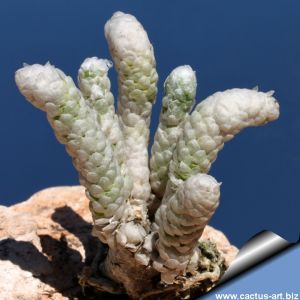|
It is a very odd plant covered with white papery scales that reflect the sun rays. RARE!
Family: Portulacaceae
Scientific name: Avonia papyracea ssp. namaensis (M. Gerbaulet) G.D. Rowley
In. Bradleya, 12: 111 (prepr. 4 July):, 1994
Synonyms:
- Anacampseros papyracea subsp. namaensis Gerbaulet (basionym)
- Avonia papyracea (E. Mey. ex Fenzl) G.D. Rowley, Bradleya, 12: 111 (prepr. 4 July):, 1994
- Anacampseros papyracea E. Mey. ex Fenzl
Origin: From southern Namibia and Great Namaland through the Northern Cape Province of the Republic of South Africa
Use: It is an edible plant which was traditionally used to induce the fermentation of homebrewed beer!
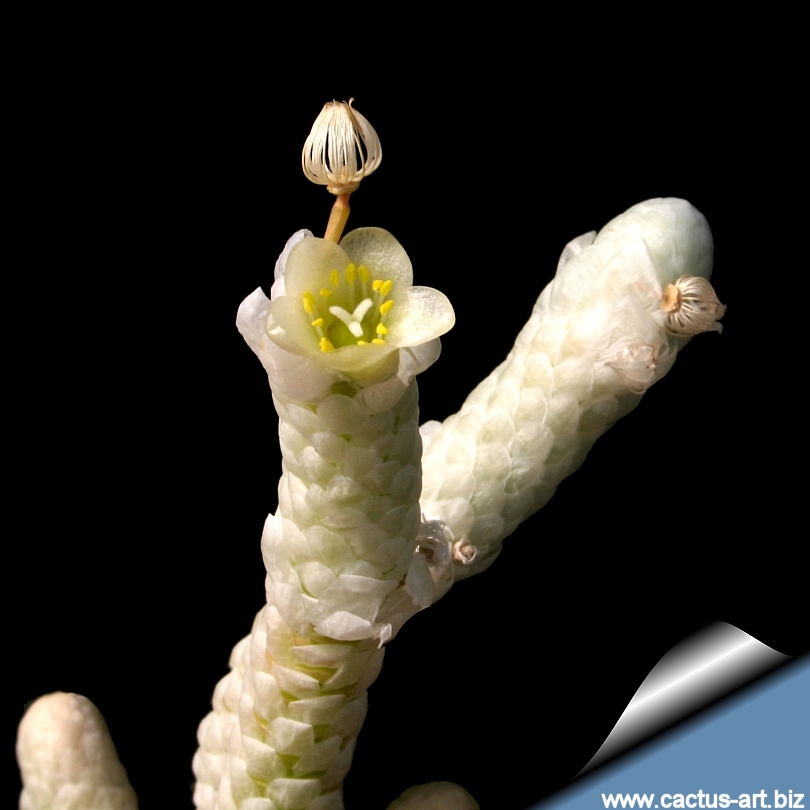 Avonia (Anacampseros) papyracea ssp. namaensis DT4504 Kinderle Avonia (Anacampseros) papyracea ssp. namaensis DT4504 Kinderle
The flower lasts less than an hour.
|
|
Description: This species is the most common, largest and stoutest of the Avonia group (the paper scale covered Anacampseros). These unusual, plants have relatively large diameter stems (5-6 mm) compared with other members of the genus and develop a mass of miniature branching erect or creeping stems (Maximum size 5-10 (15) cm long). When grown from seed, produces branches from the top of tuber-like roots pulled down into the ground.
It has minute green leaves which are each protected and hidden by very closely imbricated and pure white, papery stipule, a characteristic of the Avonia genus. This bright white scales certainly reflect a large fraction of the visible solar radiation contributing to protect the plants from the blazing sun of their bare habitat.
Flowers: The flowers are very small whitish-green and solitary, they last less than an hour, and are so unobtrusively that it is very difficult to recognized them as flower.
|
|
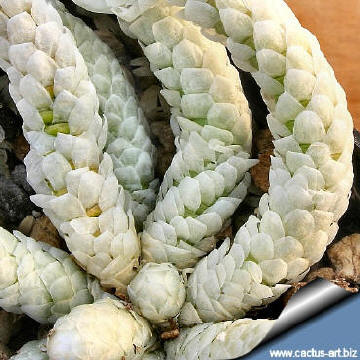
|
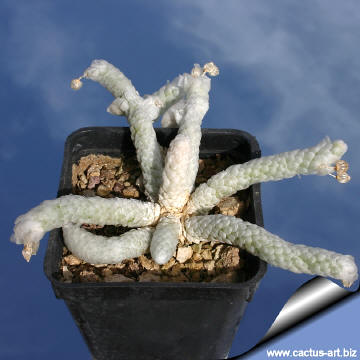
|
|
It has minute green leaves which are each protected and hidden by the white, papery stipule, a characteristic of the Avonia genus.
|
|
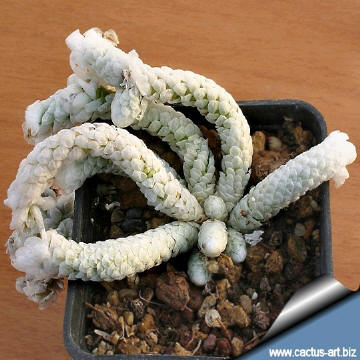
A. papyracea is a small and unusual, jewel from South Africa, slowly developing a mass of miniature branching stems covered by the white, scale-like papery stipules.
|
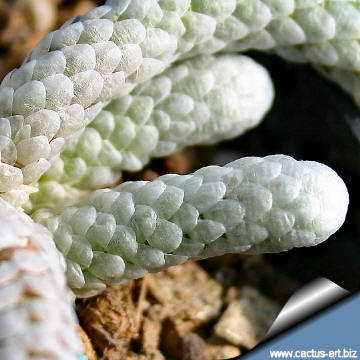
Scales protect it from the sun, and from predators (in fact the plant mimics bird droppings as a camouflage strategy and helps it to survive)
|
|
Cultivation: Although regarded as a choice and difficult plant, in cultivation it is relatively easy. Plants grow very slowly and requires careful cultivation.
Potting medium: Since roots are quite shallow, use a cactus mix or add extra perlite or pumice to regular soil potting soil. A gritty, very free-draining compost is suitable, and clay pots help the plants to dry out between watering. For best results, use a shallow pot, and only use the smallest diameter pot that will accommodate the plant.
Watering Needs: Water normally in the growing season from March to October, keep dry in winter. Feed with a high potassium liquid fertilizer in summer. It is quite frost resistant if kept dry, hardy as low as -5° C.
Sun Exposure: Light shade to full sun. High levels of light are needed to flower and for good plant development.
Clustering in cultivation, if grown correctly, it will reward the grower with generous displays of tiny flowers.
Reproduction: Seed that germinate at 15-21 °C
|

